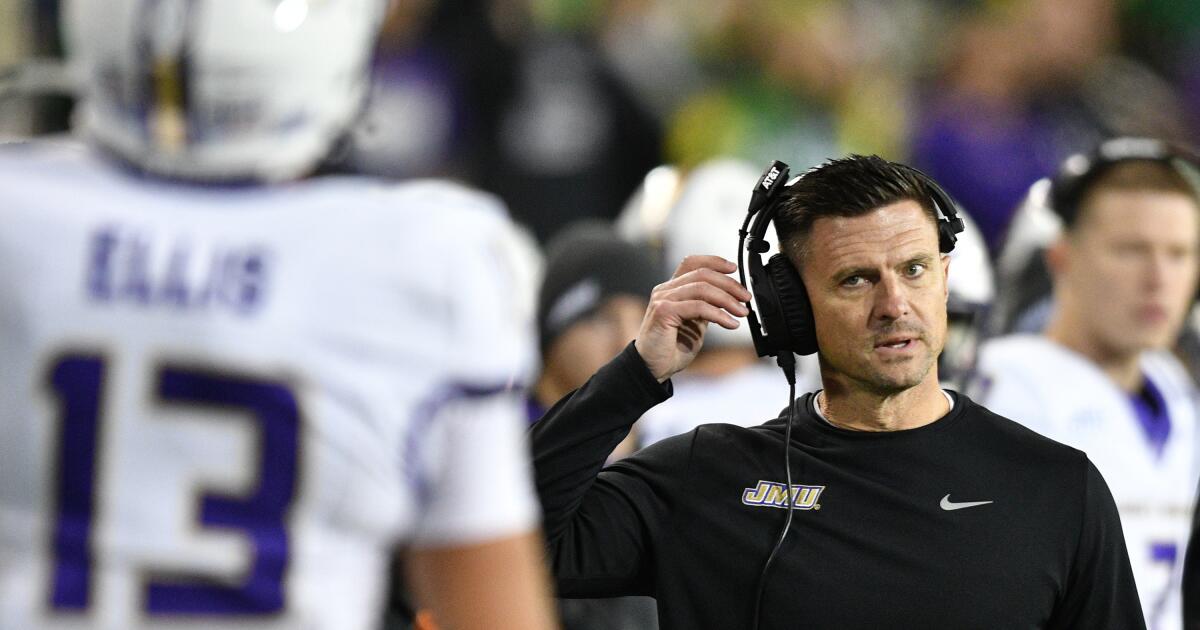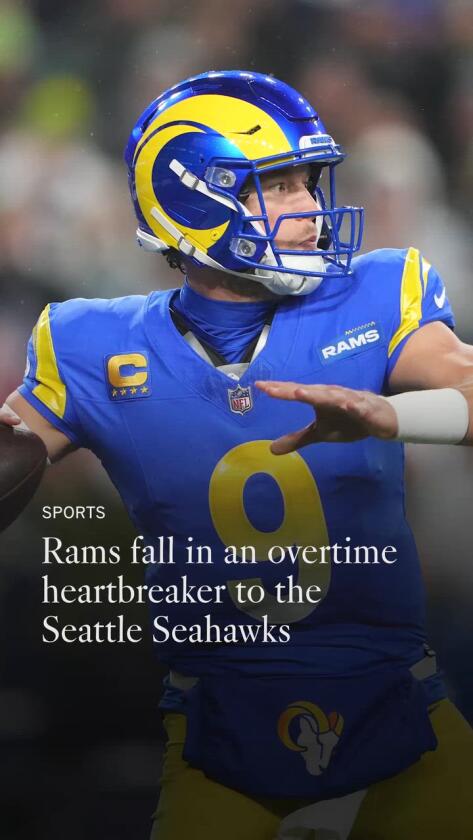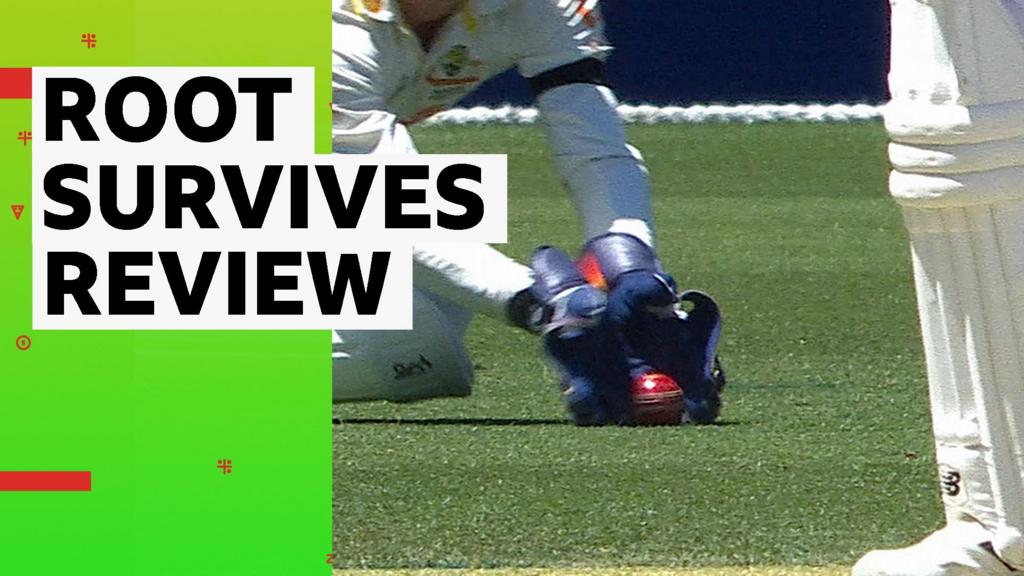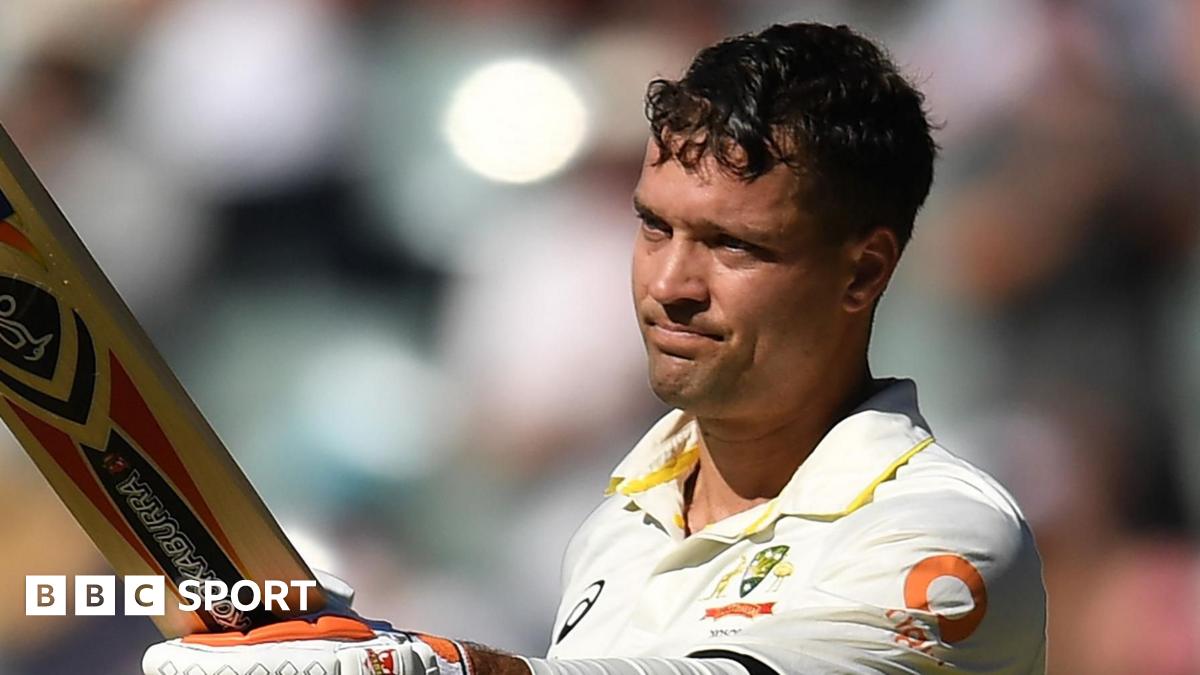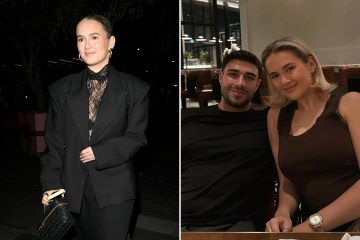James Madison fights, but Group of Five teams still struggle in CFP
EUGENE, Ore. — Perhaps it was James Madison going for it twice on fourth down on its first drive of the game.
Or, maybe it was coach Bob Chesney calling for a wide receiver pass on the Dukes’ second series of the evening. Even 12th-ranked James Madison successfully pulling off a fake punt could have adequately explained what the scoreboard failed to convey.
It was clear that the fifth-ranked Oregon Ducks were in a different class than their visitors in a 51-34 win in a College Football Playoff first round matchup Saturday at Autzen Stadium. Oregon led 48-13 midway through the third quarter before the Dukes added three late touchdowns to make the final score appear closer than the game really was.
“I think the scoreboard itself, every time we got down there we kind of shot ourselves in the foot,” said Chesney, who takes over as UCLA’s head coach after the JMU loss. “If we did not do that, if we did not end with 13 penalties, is this a little bit of a different game? Maybe. But at the same point in time, that’s a tough offense to stop, and I think it’s tough for a lot of teams in the entire country to stop.”
With James Madison’s loss, Group of Five teams fell to 0-4 all-time in CFP games. No. 17 Tulane fell 41-10 to No. 6 Mississippi on Saturday, too, while Penn State beat Boise State 31-14 in last year’s Fiesta Bowl. Alabama topped Cincinnati 27-6 in a 2022 CFP semifinal at the Cotton Bowl.
Following their loss to Ole Miss, Green Wave head coach Jon Sumrall brushed aside any notion of his team not belonging among the last 12 standing.
“We’re our conference champion and the rules are what they were, and I think there should be access for at least one G5 team moving forward,” Sumrall said. “I do. I think you should have given the American champion an opportunity before the ACC champion this year because we beat the ACC champion. So Duke won the ACC Championship; we beat them.”
To Sumrall’s point, Tulane beat a pair of Power Four teams in Northwestern and Duke, but those schools combined to go 14-11 in 2025.
James Madison, meanwhile, lost to its only Power Four opponent this season, with Louisville beating it 28-14 in a game in which the Dukes mustered just 263 yards of total offense. Most of the season, James Madison ran with the ball with ease against its opponents, rushing for over 300 yards in a game five times and over 200 yards in a game nine times.
But on Saturday, the Dukes mostly abandoned the run after quickly falling behind, and instead often turned to Sun Belt player of the year and quarterback Alonza Barnett III, who attempted a career-high 48 passes in the contest. Even so, Barnett was confident his team belonged in the CFP over other Power Four schools.
“I believe people saw that we were meant to be on this level. When you look at the Power Four teams and whatever, the destiny is really — the ball is in your court. You control your own destiny,” Barnett said. “Most of those teams that didn’t make it, they controlled their own destiny, and we handled what we could handle and we didn’t give into outside noise.”
Among Group of Five schools, James Madison did fare the best of any of them on offense in the CFP. The other three programs scored a combined 30 points in their respective playoff games, a total James Madison eclipsed against the nation’s eighth-ranked scoring defense.
But where the Dukes fell flat was slowing down the Ducks’ ninth-ranked scoring offense. Oregon ran the ball with ease, averaging more than 7.7 yards per attempt against James Madison’s run defense that entered the contest allowing the second-fewest yards per game in the country.
As has often been the case in matchups between Power Four and Group of Five teams, the greatest discrepancies existed in the trenches. To a man, James Madison could not adequately match up with Oregon, just as Tulane couldn’t with Ole Miss and many other Group of Five programs before them both failed to do.
“I think there were moments today where I feel like we could play with them,” Chesney said. “ And I think that today, the complimentary football, and us playing in the way we needed to just did not exist.”
Destin writes for the Associated Press.
